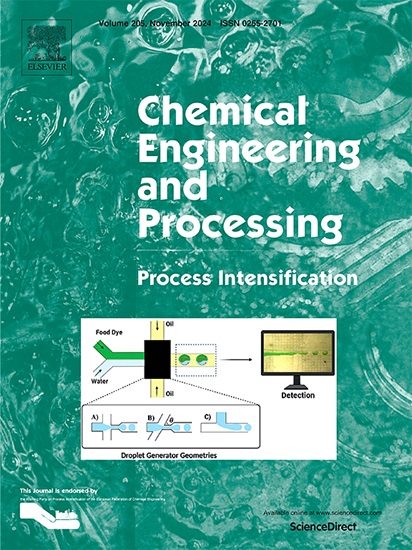Mechanism of NO removal by NH3 + CO coupling over Fe-Ce/AC catalyst at low temperature
IF 3.8
3区 工程技术
Q3 ENERGY & FUELS
Chemical Engineering and Processing - Process Intensification
Pub Date : 2025-06-04
DOI:10.1016/j.cep.2025.110392
引用次数: 0
Abstract
In order to explore the activity and mechanism of low-temperature NH3 + CO coupling removal of NO by catalysts prepared by loading transition metal element Fe and rare earth element Ce into activated carbon, Fe/AC, Ce/AC and Fe-Ce/AC catalysts were prepared in this paper. Based on the test of NO conversion rate and characterization of physicochemical properties of catalysts, the mechanism of low-temperature NH3 + CO coupling removal of NO by catalysts was proposed. The results show that the Fe-Ce/AC catalyst has higher NO conversion than the single metal supported catalyst. Although the surface of Fe-Ce/AC catalyst is rough, the pores are fully developed, and the metal oxides are better loaded and uniformly dispersed. The N2 isothermal adsorption-desorption curve showed typical I-type and IV-type isotherms, with H4-type hysteresis loop. Ce doping makes Fe uniformly loaded, the diffraction peaks of metal oxides weakened. Fe-Ce/AC has more oxygen-containing functional groups and oxygen vacancies than single metal supported catalysts. The Fe-Ce/AC catalyst is dominated by physical adsorption and L-H mechanism before 150 °C. Some Ce active components are dominated by E-R mechanism at 150∼200 °C. After 200 °C, the E-R mechanism is dominant.

Fe-Ce/AC催化剂上NH3 + CO低温偶联脱除NO的机理
为探究在活性炭中加载过渡金属元素Fe和稀土元素Ce制备的催化剂对NH3 + CO低温偶联脱除NO的活性和机理,本文制备了Fe/AC、Ce/AC和Fe-Ce/AC催化剂。通过对NO转化率的测试和催化剂理化性质的表征,提出了催化剂低温NH3 + CO偶联脱除NO的机理。结果表明,Fe-Ce/AC催化剂比单金属负载催化剂具有更高的NO转化率。Fe-Ce/AC催化剂表面粗糙,但气孔发育充分,金属氧化物负载较好,分散均匀。N2等温吸附-解吸曲线表现为典型的i型和iv型等温线,并存在h4型滞回线。Ce掺杂使Fe负载均匀,金属氧化物的衍射峰减弱。Fe-Ce/AC具有比单金属负载催化剂更多的含氧官能团和氧空位。在150℃前,Fe-Ce/AC催化剂以物理吸附和L-H机制为主。部分Ce活性组分在150 ~ 200℃时以E-R机制为主。在200℃后,E-R机制起主导作用。
本文章由计算机程序翻译,如有差异,请以英文原文为准。
求助全文
约1分钟内获得全文
求助全文
来源期刊
CiteScore
7.80
自引率
9.30%
发文量
408
审稿时长
49 days
期刊介绍:
Chemical Engineering and Processing: Process Intensification is intended for practicing researchers in industry and academia, working in the field of Process Engineering and related to the subject of Process Intensification.Articles published in the Journal demonstrate how novel discoveries, developments and theories in the field of Process Engineering and in particular Process Intensification may be used for analysis and design of innovative equipment and processing methods with substantially improved sustainability, efficiency and environmental performance.

 求助内容:
求助内容: 应助结果提醒方式:
应助结果提醒方式:


